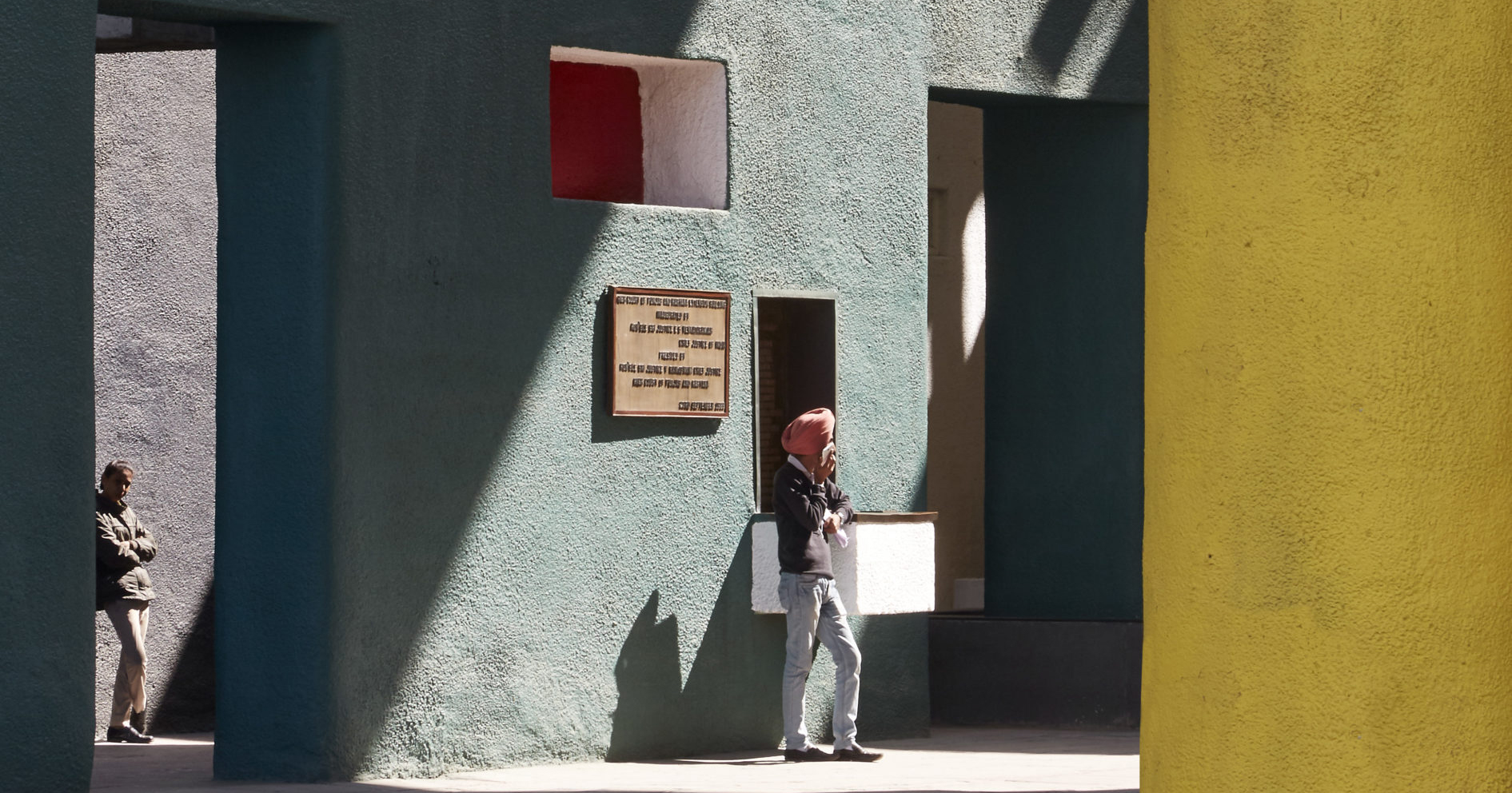Feast your eyes on the world's most outstanding architectural photographs, videos, visualizations, drawing and models with the winners of Architizer's inaugural Vision Awards. Sign up to receive future program updates >
India is a land rich in culture and architecture. Language, food, traditions and identity change drastically from state to state. The architecture of India often reflects all these elements. While newer designs across the country take on more contemporary forms, they continue to celebrate the rich heritage and crafts of the country.
Last year’s One Photo Challenge saw several entries from photographers that have shared moments from both unknown and iconic structures in the country. These photos go a step beyond featuring noteworthy design and try to elucidate the experience of walking through these spaces while offering a new way of looking at those who shape these buildings and cities.
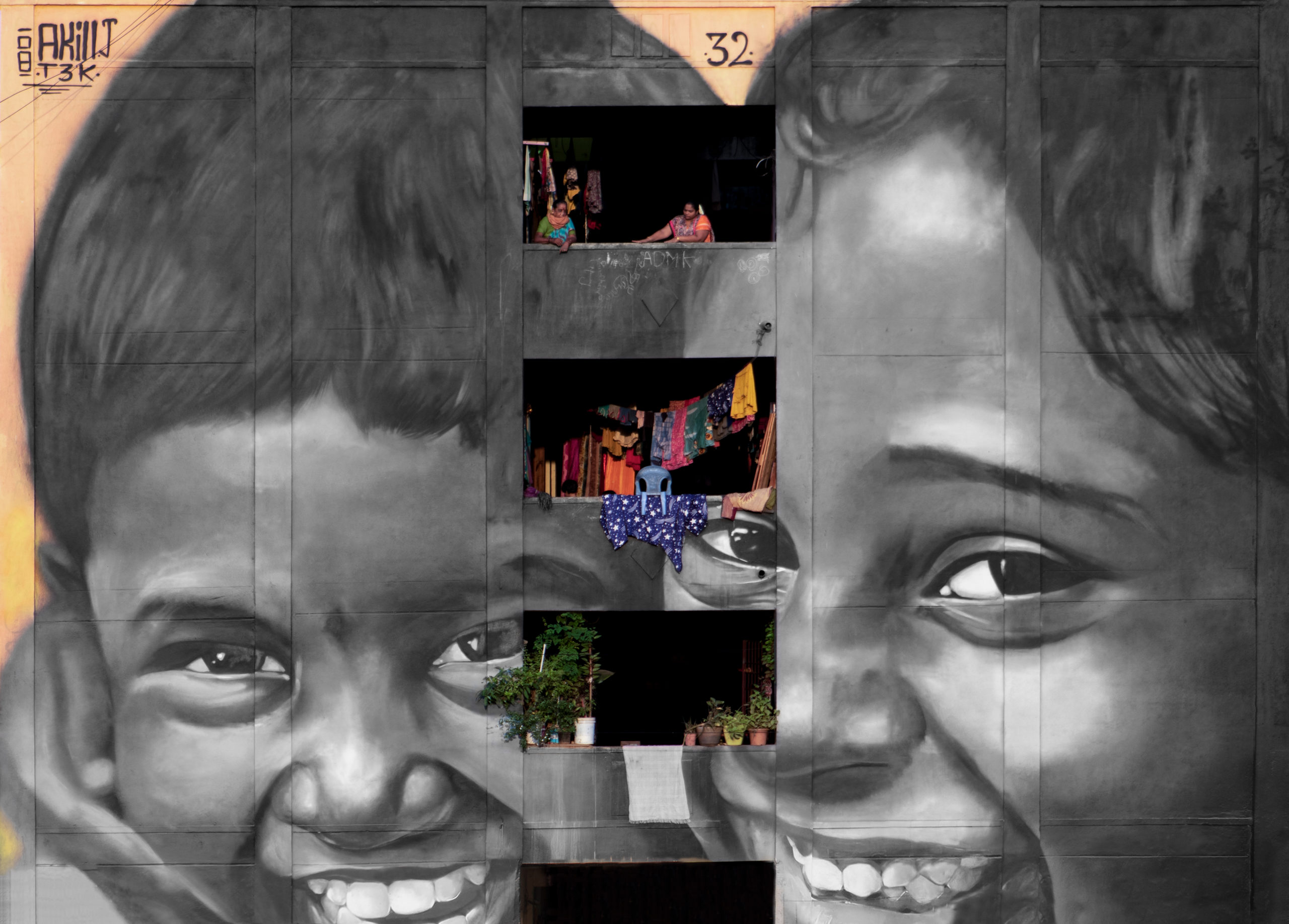 “Poor Man’s Canvas“ by Kavin Kumar La Sa
“Poor Man’s Canvas“ by Kavin Kumar La Sa
Student Winner, 2021 One Photo Competition
Several walls of buildings in Kannagi Naggar, a resettlement area in Chennai, are painted in vivid murals featuring smiling faces, geometric art and realistic scenes. The part of the city that was once known for crime and violence is now making headlines for a completely different reason. The art initiative played a great role in changing not only others’ perceptions of the locality but also brought to notice the social issues of the community living here. It is almost like every stroke of paint on the wall was erasing the dark identity and creating a new one.
In this photo, black and white faces on the façade frame colorful clotheslines, blooming plants and two occupants in conversation, almost giving a glimpse into the occupants’ life. The photographer asks a question, “Can art matter amidst poverty?” And in Kannagi Nagar, it seems like it has.
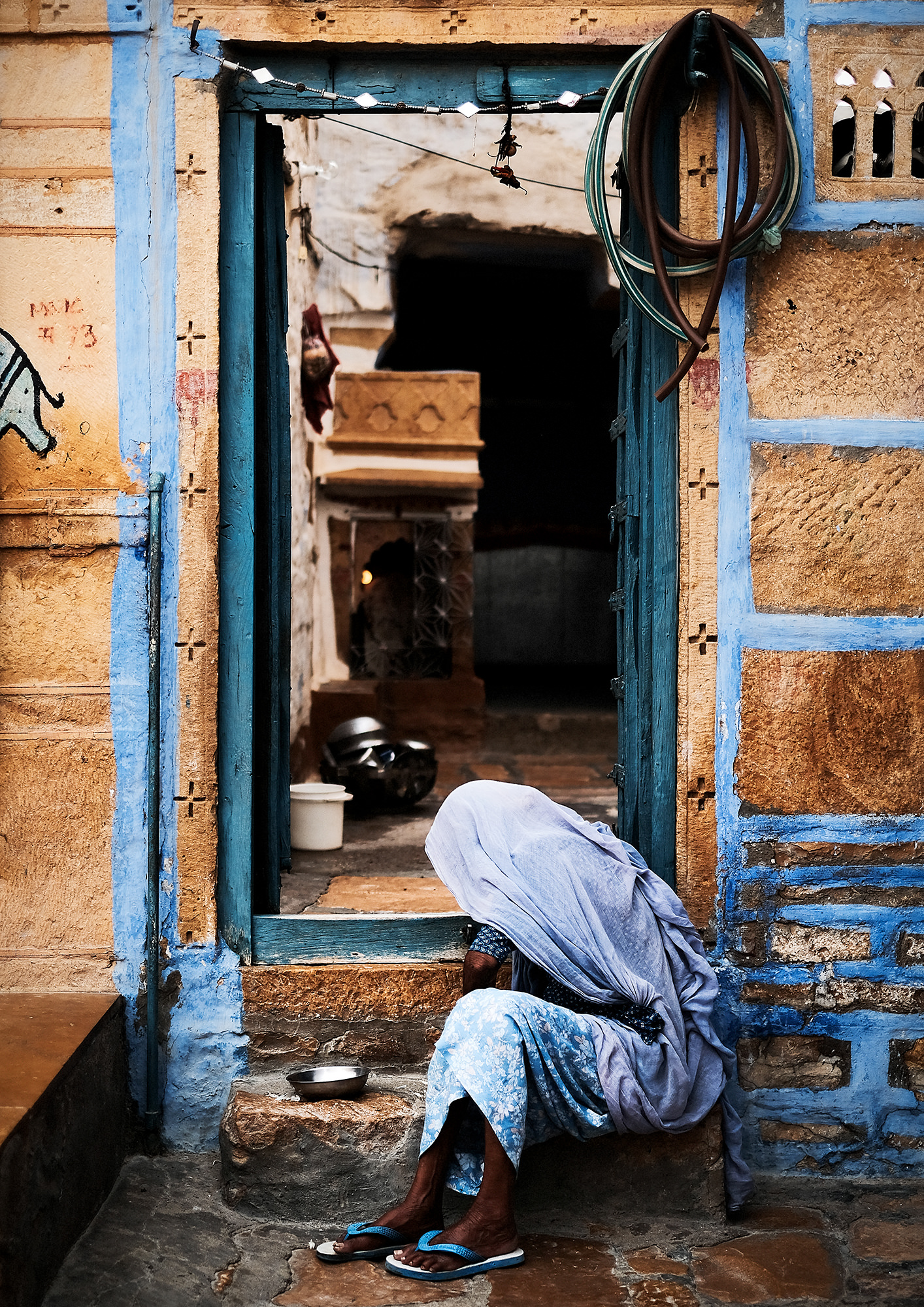 “Pastel Blue“ by Jonathan Sage
“Pastel Blue“ by Jonathan Sage
One of the most interesting things about Rajasthan is that several cities in the state have their own color identity. Jaipur is called the pink city, Johdhpur is known for its iconic blue houses and structures in Jaisalmer are covered in golden sandstone. While the overall palette remains uniform, homeowners in Jaisalmer express their individuality through carvings and decorative patterns on the exterior surfaces.
In this photo, a woman sits on the threshold of her home, her face obscured by her sari. An ornament made with lemon and chilies hangs on the doorway to ward off evil along with a welcoming garland made of mirrors and beads. The image comes to life with the bright blue tones of the decorations on the walls that are replicated in her sari and slippers.
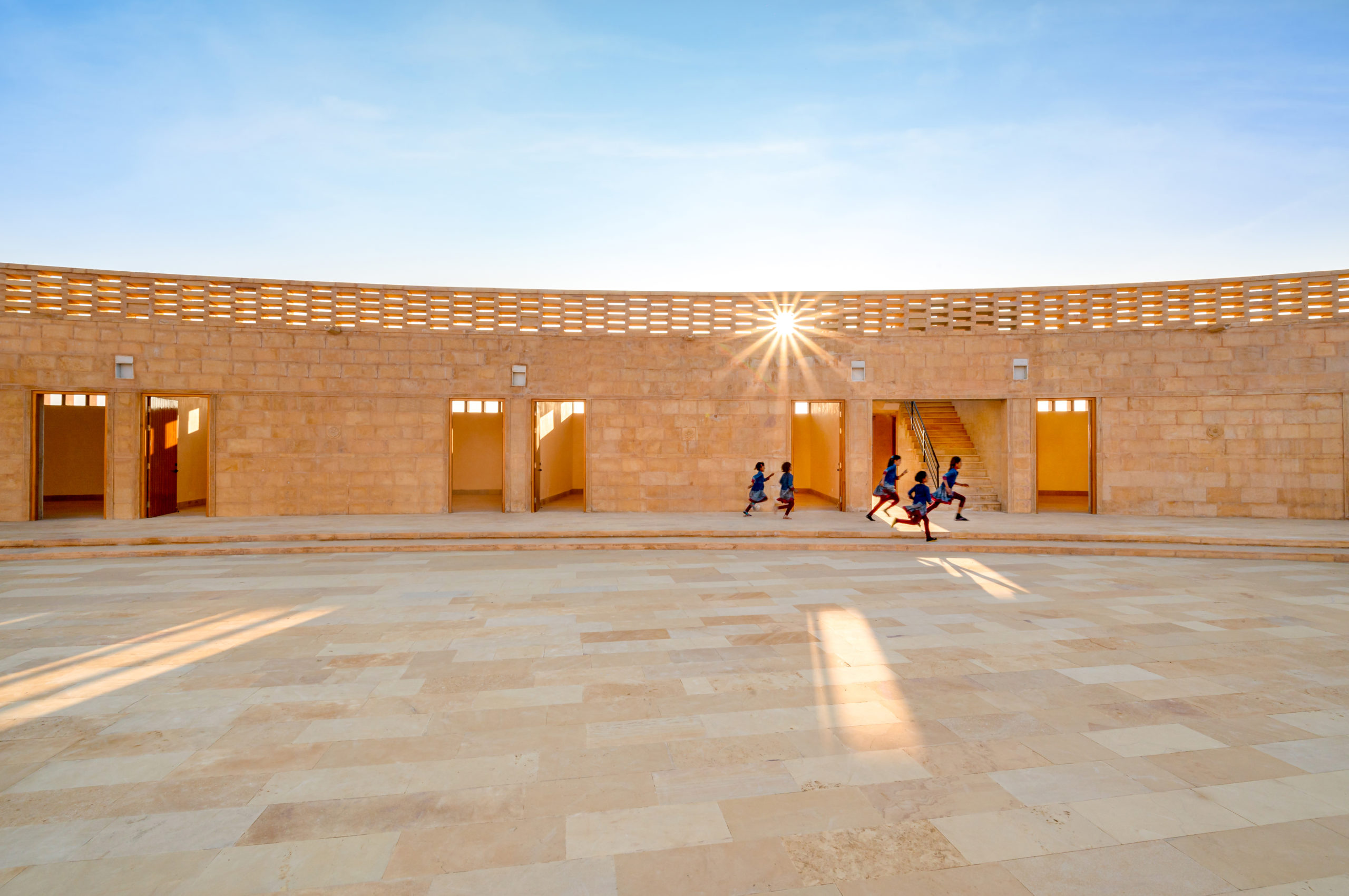 “First Day at The Rajkumari Ratnavati Girl’s School“ by Vinay Panjwani
“First Day at The Rajkumari Ratnavati Girl’s School“ by Vinay Panjwani
The Rajkumari Ratnavati Girl’s School in Jaisalmer, designed by architect Dianna Kellogg, caters to more than 400 girls that belong to families below the poverty line. The structure was conceived as a large oval within the desert. This particular image was captured when the young girls entered the school for the first time. One can feel their joy and exuberance through the image bringing the stationary architecture to life. The sun rays peeking through the perforations in the wall not only symbolize the start of a new day but are a sign of new beginnings and hope.
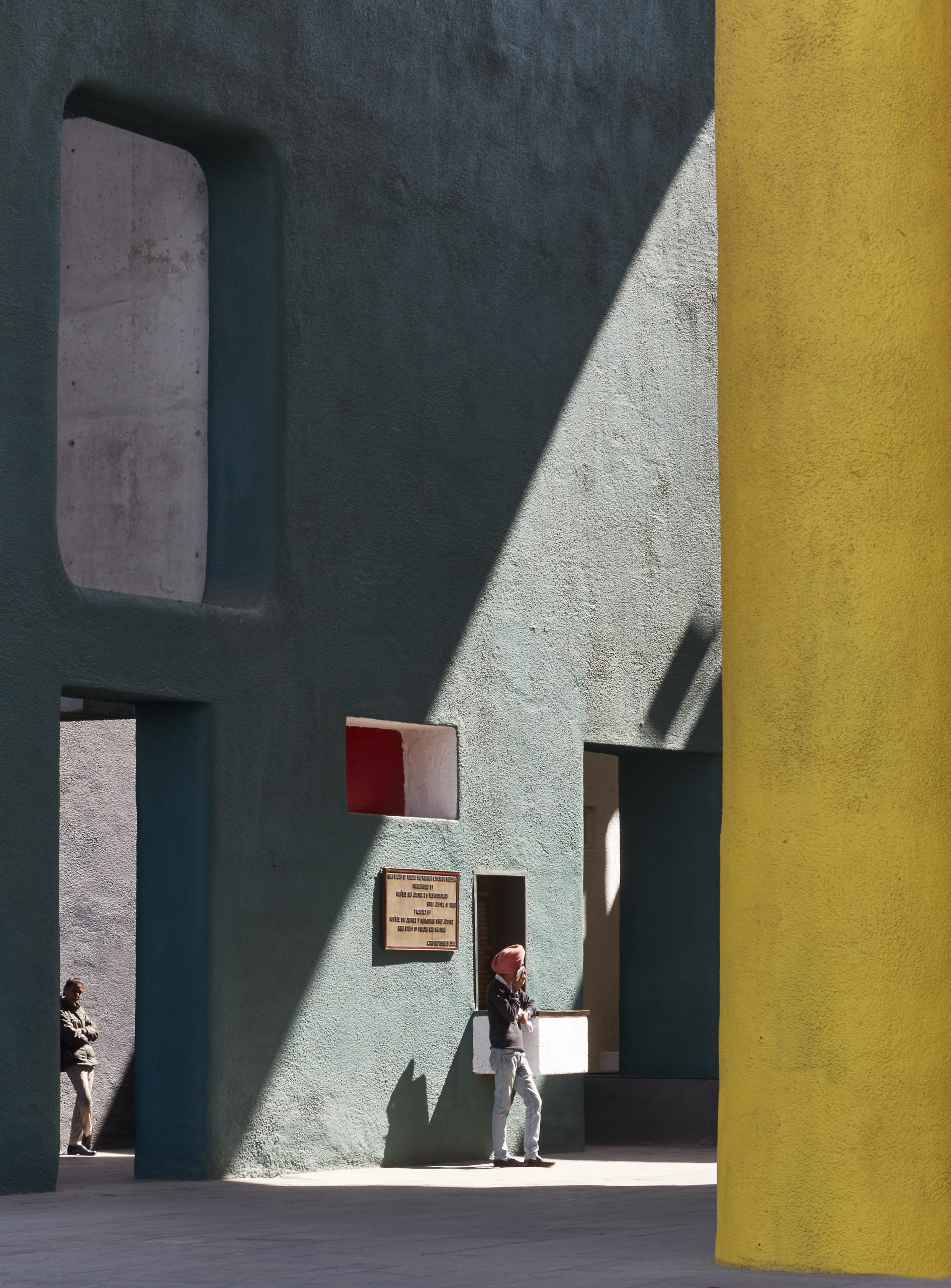 “The Leaning Man (द लीनिंग मैन)“ by Edmund Sumner
“The Leaning Man (द लीनिंग मैन)“ by Edmund Sumner
Due to restricted access, Sumner had to photograph the High Court of Chandigarh, designed by renowned architect Le Corbusier, on a tourist tour using a handheld camera with a long lens. The photo takes place in a moment when the sun and architecture align to create a beautiful geometric composition.
The pop of yellow juxtaposed with a calmer turquoise makes the lines of the architecture shine. Moreover, the color of the man’s turban ties with the window. The posture of the man leaning in the front also coincidentally mimics the posture of the person behind, adding an element of tension. The title of the photo is a reference to the controversial Falling Man photograph.
 “The First Occupant“ by Arshdeep Singh
“The First Occupant“ by Arshdeep Singh
The photographer notes that the first occupants of any building are the laborers who make an architect’s vision a reality. The often-exploited construction workers spend days, months and years turning a piece of land into a home or office for others to occupy. Several men leave their homes in small villages and come to big cities in search of employment opportunities, ultimately ending up as hourly wage workers on construction sites such as the one in this photo. This image was clicked during the construction of an extension to a Corbusier building in Chandigarh. It aims to portray these workers as the true heroes of architecture.
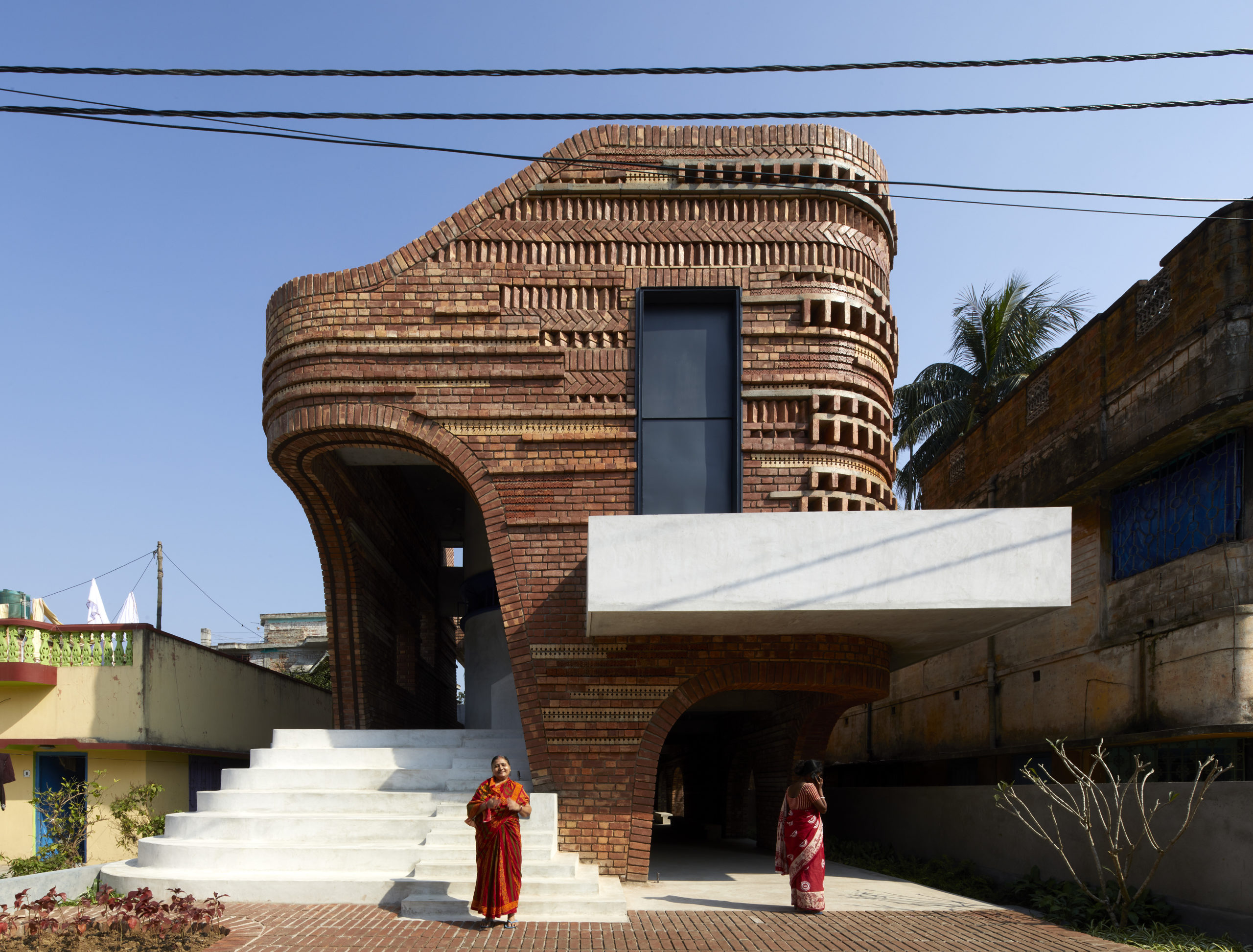 “Bansberia (बांसबेरिया) West Bengal India“ by Edmund Sumner
“Bansberia (बांसबेरिया) West Bengal India“ by Edmund Sumner
The subject of this photo is the Gallery House in Bansberia, West Bengal, designed by Abin Chaudhuri. The multipurpose community center is a gallery and gathering space for local residents. It also acts as a home for the staff. Despite the small size, the building’s decorative brick and ceramic block façade help it stand out among the other buildings in the neighborhood.
The starkness of the light grey concrete steps and balcony differentiates these elements from the more ornate terracotta walls. The priest’s wife and the custodian of the center stand in front of the building, proud and happy. The photographer said, “In a sense the juxtaposition reflects the changing face of India, a nation showing respect to the past but playful excitement for the future.”
 “Mumbai from Above“ by Babak Eslahjou
“Mumbai from Above“ by Babak Eslahjou
Movies and stories in the news have often popularized Mumbai for its slums. Visuals that show dense areas full of tarp-covered roofs and organic settlements that are equated with poverty sitting right next to high rises or planned residential complexes. In this photo, Eslahjou is celebrating the spontaneity of people.
The photographer is changing the way of thinking by pointing out that it is the people that create cities. Architecture is not something that is just created by those trained to practice but also by those who build spaces to meet their basic needs. And Mumbai has both, making it a dynamic city that houses people from all walks of life.
Feast your eyes on the world's most outstanding architectural photographs, videos, visualizations, drawing and models with the winners of Architizer's inaugural Vision Awards. Sign up to receive future program updates >
